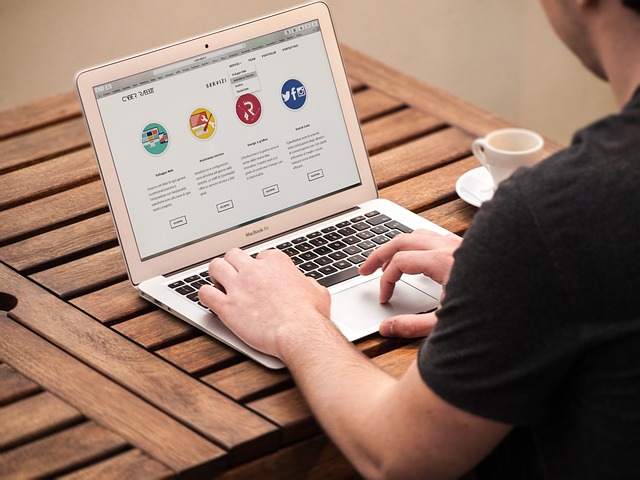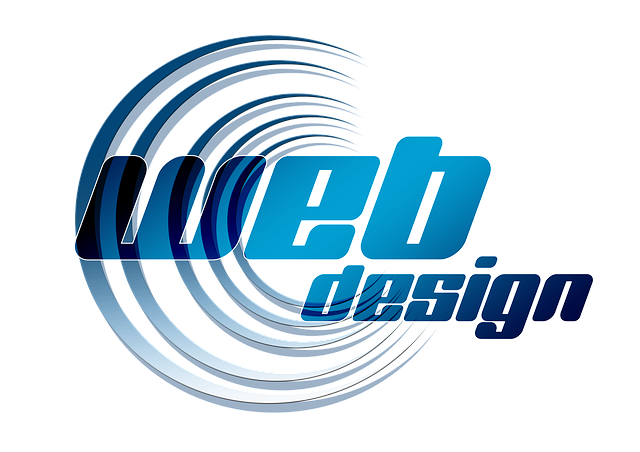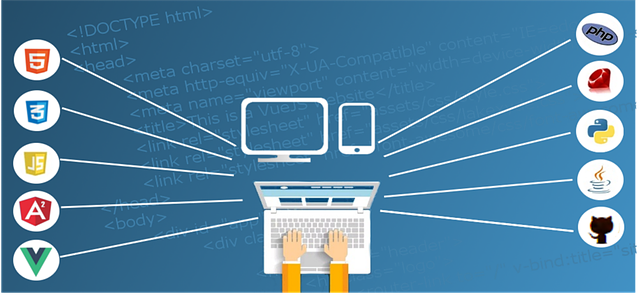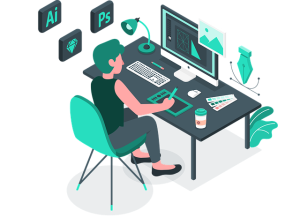Custom web design goes beyond aesthetics to create digital experiences that embody a brand's identity and achieve its goals, setting businesses apart in a competitive online market. Defining target audiences is crucial for tailoring designs to their preferences, influencing color schemes, layout, content placement, and interactive elements. Effective custom web design balances branding, visual hierarchy, user experience (UX), and strategic interactivity to foster trust, engagement, and conversions. Prioritizing UX ensures sites are intuitive and functional. Color selection impacts user experience and brand identity, while interactive features enhance engagement. Custom web design has proven successful in driving customer satisfaction, retention, and revenue growth.
In today’s digital landscape, a website isn’t just an online presence; it’s a powerful tool to engage and captivate audiences. Custom web design goes beyond standard templates, offering unique aesthetics tailored to your brand. This article explores the nuances of creating a distinctive digital experience. From understanding the importance of custom design and defining target audiences to key layout elements, branding integration, visual hierarchy, UX optimization, and impactful color schemes—we delve into strategies for success. Additionally, we’ll highlight best practices through case studies, empowering you to harness the potential of custom web design.
Understanding Custom Web Design: Its Importance and Benefits

Custom web design is more than just creating an attractive website; it’s about tailoring a digital experience that perfectly aligns with a brand’s identity and goals. In today’s competitive online landscape, where users have endless options at their fingertips, a unique and bespoke site can set a business apart. It allows companies to express their essence, engage audiences on a deeper level, and deliver content in a way that resonates specifically with their target market.
The benefits of custom web design are multifaceted. It enhances user experience by providing a seamless, intuitive interface tailored to individual needs, ultimately driving higher engagement and conversion rates. A custom-built site can also improve search engine optimization (SEO), as unique, optimized code promotes faster loading times and better indexability. Moreover, it fosters trust and credibility by showcasing a brand’s dedication to delivering high-quality, specialized solutions.
Defining Your Target Audience for Unique Website Aesthetics

Defining your target audience is a crucial step in crafting a unique website design that resonates with your ideal visitors. When it comes to custom web design, understanding who your audience is allows you to create an experience tailored to their needs and preferences. Consider factors such as age, demographics, interests, and online behavior to paint a clear picture of your target market. This knowledge will guide your design choices, from color schemes and layout to content placement and interactive elements.
For instance, if your website caters to millennials with a passion for sustainable living, aesthetics that incorporate earthy tones, minimalist layouts, and engaging multimedia could be effective. Conversely, designing for a corporate audience might call for a more formal aesthetic featuring clean lines, professional branding, and clear navigation. Tailoring your design to specific user personas ensures that your custom web design not only stands out but also effectively communicates your brand’s message and values.
Key Elements of a Standout Website Layout

A standout website layout is crafted from a harmonious blend of key elements that captivate users and elevate the brand. At the heart of this lies custom web design, which goes beyond generic templates to create a unique visual identity. It involves tailoring every aspect—from color schemes and typography to navigation and content placement—to reflect the essence of the business or organization. This personalization not only ensures a visually appealing experience but also fosters trust and engagement with visitors.
Effective website layouts prioritize user experience, ensuring intuitive navigation that guides users effortlessly through various pages. Balancing aesthetics with functionality, these designs incorporate clear calls to action, well-spaced elements, and responsive design for seamless interaction across devices. By integrating these principles, custom web design transforms a simple online presence into a compelling digital destination that keeps visitors engaged and encourages them to explore further.
Incorporating Branding into Custom Web Design

Incorporating branding into custom web design is a strategic move that goes beyond aesthetics; it’s about crafting an online presence that resonates with your target audience and reflects your brand identity. Custom web design offers a blank canvas where designers can translate your brand’s unique story, values, and personality into visual elements, ensuring consistency across all digital platforms. By seamlessly integrating branding, businesses create a unified user experience that builds recognition and fosters trust.
Effective branding in custom web design involves aligning color palettes, typography, imagery, and layout with your brand guidelines. This ensures that every element on the website contributes to the overall brand image, creating a cohesive visual narrative. Furthermore, strategic placement of logos, navigation elements, and call-to-action buttons reinforces brand recognition while guiding users through the site’s journey, ultimately driving engagement and conversions.
Best Practices for Visual Hierarchy in Web Design

Creating a visually appealing and effective website starts with establishing a clear visual hierarchy. This is achieved by guiding users’ eyes through the page using thoughtful layout, typography, and color to prioritize content. The most important elements, like headlines and calls-to-action, should stand out while lesser details recede into the background.
In custom web design, this translates to strategic placement of key information. Using contrasting colors, font sizes, and spacing can help achieve this. For instance, larger, bolder fonts for headings paired with smaller, more subtle text for body copy creates a natural flow that leads users through the content. This ensures that visitors quickly grasp the main points while also allowing them to explore other details at their own pace.
The Role of User Experience (UX) in Unique Websites

In the realm of unique website design, User Experience (UX) serves as the guiding light, ensuring that every click, scroll, and interaction is a delightful journey for the user. Custom web design isn’t merely about aesthetics; it’s about crafting an intuitive, accessible, and engaging environment that aligns with the brand’s identity and meets the specific needs of its target audience. A well-designed UX considers user flows, navigation simplicity, and responsive design to create sites that adapt seamlessly across various devices.
When implementing custom web design, prioritizing UX means understanding user behaviors, pain points, and expectations. This involves thorough research, wireframing, prototyping, and iterative testing. The end result is not just a visually stunning site but one that provides a seamless, efficient, and enjoyable experience, fostering user loyalty and driving conversions—a true testament to the power of UX in unique website design.
Choosing the Right Color Scheme for Maximum Impact

When crafting a unique website design, selecting the perfect color palette is an art in itself. The right color scheme can instantly capture your audience’s attention and leave a lasting impression. In custom web design, this creative choice becomes a powerful tool to convey brand identity and enhance user experience. It’s not just about aesthetics; colors evoke emotions and influence how users interact with your site. For instance, warm hues like red and orange create a sense of energy and urgency, while cool tones like blue and green inspire trust and calmness.
Consider your target audience and the message you want to convey when making this decision. A well-thought-out color scheme can guide users through the website, highlighting key elements and creating visual hierarchy. In the realm of custom web design, professionals use tools that allow for precise color adjustments, ensuring every detail aligns with the brand’s vision. This attention to visual harmony not only makes your site aesthetically pleasing but also encourages visitors to explore further, maximizing engagement and converting them into loyal users.
Interactive Elements: Enhancing User Engagement

In the realm of custom web design, interactive elements play a pivotal role in enhancing user engagement. Beyond static content and visually appealing layouts, websites infused with interactivity create dynamic experiences that captivate visitors. These elements encourage users to actively participate, fostering deeper connections with the brand or information presented. By incorporating features like animated transitions, hover effects, and interactive forms, designers can transform mere viewers into engaged participants.
Interactive components not only break the monotony of traditional web browsing but also offer numerous benefits. They improve user retention, increase time spent on the site, and boost conversion rates. Moreover, interactivity allows for seamless navigation, making complex information more digestible and entertaining. When implemented thoughtfully, these elements can set a website apart, leaving a lasting impression and encouraging users to return, thereby underscoring the power of custom web design in creating memorable online experiences.
Case Studies: Successful Implementation of Custom Web Design

Custom web design has proven to be a game-changer for many businesses, as it allows them to stand out in a crowded digital landscape. Case studies show that successful implementations of custom design can significantly enhance user experience and drive engagement. For instance, a recent study highlighted a small e-commerce startup that redesigned its website using bespoke visuals and interactive elements tailored to its target audience. The result was a 30% increase in conversions within the first quarter after launch.
Another notable example is a B2B software company that customized its platform’s interface based on user feedback and industry trends. This approach not only improved user satisfaction but also led to increased customer retention and a 25% growth in annual revenue. These success stories underscore the power of custom web design in creating unique, effective, and profitable online presences.
